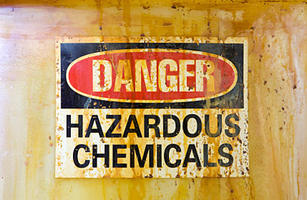
© unknown
Last week, and capping at least a
decades-long battle by consumer advocates, the EPA
announced a long-awaited ban on the pesticide endosulfan - one of the last legal organochlorine pesticides, a notorious group of which DDT is a member. Horrifically toxic (possibly more toxic to humans than DDT) and banned in the European Union since 2007, endosulfan remains in common - though technically restricted - use, especially on Florida tomatoes and California and Nevada cotton, according to the
Pesticide Action Network, while an article in the
Environmental Health News presents a much
longer list of uses, including melons, cucumbers, squashes, potatoes, apples, blueberries, eggplant, lettuce and other leafy vegetables, pears, peppers and stone fruit and cotton.
Endosulfan also easily spreads through the air (no doubt like the nerve gases from which pesticides such as this were derived). A 2008 National Park Service
report found significant levels of endosulfan throughout Western national park eco-systems, even when there was no nearby agricultural use. A
Scientific American article observed, unlike its organochlorine brethren, endosulfan's environmental concentrations "have been increasing since the 1980s in the Arctic and in other remote ecosystems." As a result of all this and along with other data released during the EPA's lengthy re-examination of the pesticide, California delared endosulfan to be a "toxic air contaminant" in 2008.
In short, good riddance.
On a related note, can I just say that Florida agribusiness really doesn't play nice, and not only because its farmworkers are at some of the gravest risk from the use of endosulfan. Let's take just a moment to review Florida's recent agricultural lowlights. First, there were the thousands of farmworkers in Immokalee (aka "the tomato capital of the United States") kept in virtual slavery - and exposed by the great Barry Estabrook. Next, came the sad saga of the sugar industry's role in the degradation of the Everglades and its ability to end up the recipient of a financial windfall in the plan to clear them up. And just the other week, we learned of the tragedy of Apopka, Florida (Barry Estabrook, again), where agribusiness poisoned thousands of workers, then received its own bailout from the state government while the workers have been left to sicken and die on their own. Florida, what is your problem?
Now, back to the issue at hand: You really have to question the length of time it took to get a product as dangerous as endosulfan off the shelf. And let's be clear, the EPA still must "negotiate" with endosulfan's producer Makhteshim Agan in order to avoid a long phaseout; if the company balks, and to be fair there's no indication at this time that they will, endosulfan could stay on the market for an extended period. Assuming that doesn't happen and it soon becomes unavailable in the US, endosulfan remains in use in India and Australia.
And this one victory must be considered against the thousands of toxic chemicals that continue to surround poison us. A case in point is the newly approved
pesticide methyl iodide - even more toxic than methyl bromide, the chemical it replaces. Unless California's legislature acts quickly, methyl iodide will soon go into wide use on the state's conventional strawberry crop.
It's hard to revel in the victory over one supertoxic pesticide when another shambles up right behind it. Indeed, if you start to do the math, it becomes clear that ten-year-long campaigns against a list of thousands, possibly tens of thousands, of hazardous chemicals in our environment is simply too long and winding a road to environmental health. And if, as Tom Philpott
suggests, agribusiness responds to regulations and resistance with more toxic chemical solutions to our "problems," we will end up at a very unfortunately destination.
I+ve been through shelf after shelf of documents on these compounds, and generally, I'd say that the endosulfan-like organochlorines, are far more toxic and environmentally harmful (as such), than the DDT group, but it was never used at the same extreme amounts. It was just approveed for a few very special uses (totaling a few kilos here in Norway), and was banned (for political reasons), in the middle 1990ies. (Here in Northern Europe). I don't think anybody, but (maybe) producers of strawberry cuttings, ever missed it...